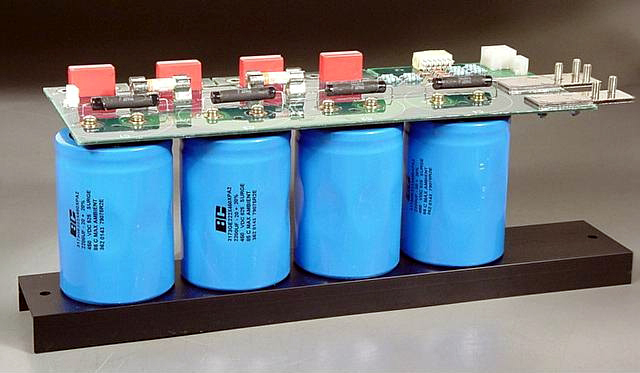Earlier this month I had the chance to buy a few of these from a junkyard sale here in town: imgur: the simple image sharer
So here are a few questions for you guys, pardon in advance if they're too basic or obvious.
1) What would you do with these? Of course I'm thinking tube amps But shrinking coins, cutting cans or popping hard disk plates to the sky are no bad idea either
But shrinking coins, cutting cans or popping hard disk plates to the sky are no bad idea either 
2) They're rated at 415 VAC, but on the EPCOS datasheet it says they were tested at up to 3000 VAC for 10 seconds. Question is: what would be a safe DC rating for these? Can I hook them up to 500 VDC? I have a circuit here with 900VDC +B - can I even dream of hooking one up there?
3) After I brought them to my shop, one of them leaked some oil in my hand. It didn't smell, no itching, no irritation...I ran to the tank and washed my hands thoroughly, knowing the hazards of old transformer oil, but I must have been in direct contact with it for 2 to 3 minutes till I got to soap and water. You guys think this oil was toxic?
4) What does the kvar unit mean in practice, as explained to a 5 year old? Does it mean I can safely discharge the C * V^2 energy stored in it at a rate of 3.3 KV power?
Thanks very much in advance!
So here are a few questions for you guys, pardon in advance if they're too basic or obvious.
1) What would you do with these? Of course I'm thinking tube amps
 But shrinking coins, cutting cans or popping hard disk plates to the sky are no bad idea either
But shrinking coins, cutting cans or popping hard disk plates to the sky are no bad idea either 
2) They're rated at 415 VAC, but on the EPCOS datasheet it says they were tested at up to 3000 VAC for 10 seconds. Question is: what would be a safe DC rating for these? Can I hook them up to 500 VDC? I have a circuit here with 900VDC +B - can I even dream of hooking one up there?
3) After I brought them to my shop, one of them leaked some oil in my hand. It didn't smell, no itching, no irritation...I ran to the tank and washed my hands thoroughly, knowing the hazards of old transformer oil, but I must have been in direct contact with it for 2 to 3 minutes till I got to soap and water. You guys think this oil was toxic?
4) What does the kvar unit mean in practice, as explained to a 5 year old? Does it mean I can safely discharge the C * V^2 energy stored in it at a rate of 3.3 KV power?
Thanks very much in advance!

Comment